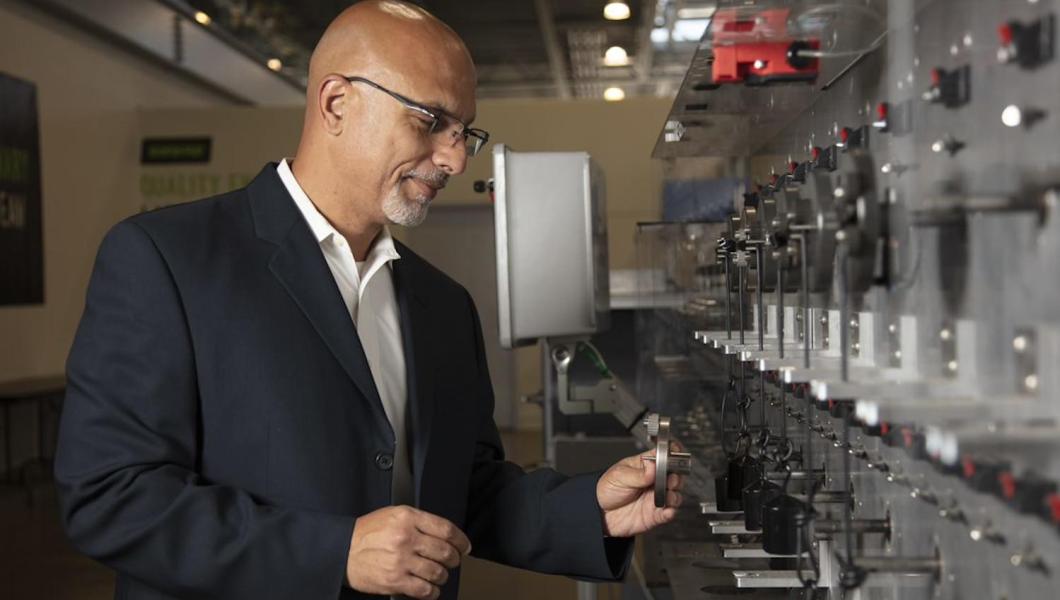Student Wins Scholarship for Helping Reduce Electron Leakage in Blue LEDs

Andressa Marangon, a senior electrical and computer engineering major at New Jersey Institute of Technology, won a $1,000 scholarship from the IEEE Electron Devices Society for her role in improving the brightness and power consumption of blue LEDs that technologically lag behind their red and green cousins.
That might not affect your iPhone or TV anytime soon, she said, but it's important for applications such as healthcare products and industrial machinery.
Red, green and blue lights are required to make all other colors, but blue LEDs tend to leak electrons because they have a relatively large gap between their outermost layers, Marangon explained.
Where red and green have been viable for a half-century, blue LEDs weren't invented until the 1970s and were not viable until the 1990s. Even now, they're not as good as their counterparts. Current methods of blue LED production can use electron-blocking layers, which improve the leakage but then lose some of it right back, as not enough negatively charged electrons combine with positively charged holes in the semiconductor material. That causes the LEDs to give off more heat and less light.
Marangon's team, led by LED research expert Associate Professor Hieu Nguyen and including Ph.D. students Barsha Jain and Ravi Teja Velpula, developed a microscopic scaffold called a double-sided step-graded superlattice. It holds together a new kind of blocker that reduces the problem of electrons not mating into semiconductor holes by changing the chemistry of the hole transport mechanism. The result is a blue LED that's almost three times brighter, when exposed to double the usual current, than current commercially available versions.
Endorsed by her fresh and prestigious scholarship, Marangon said the next steps are to get her team's research paper published in a peer-reviewed journal, obtain a National Science Foundation grant to further the research, build working prototypes and possibly patent it for commercial applications.
Electrons are famous for not staying still, and Marangon arrived in Nguyen's research group through a journey that moved as much as her ultimate research topic. A native of Brazil who always liked math and science, she came to the U.S. in her 20s and initially studied psychology at Hudson County Community College. She switched majors to business and became a real estate agent. She then studied law and finally decided to apply her original interests through electrical and computer engineering. This was inspired by her early fascination with math and science, further motivated by the result of her not understanding the painful implications upon inserting scissors into an electrical outlet.
Now, as the first generation in her family to attend college and on track to graduate from NJIT's McNair Scholars program in December 2022, Marangon intends to stay a Highlander for her graduate studies. "I owe it a lot to Dr. [Durga] Misra," who leads the McNair program and nominated her for the scholarship. "My mission is to focus on nanotechnology. This research is the stepping stone toward that path."

